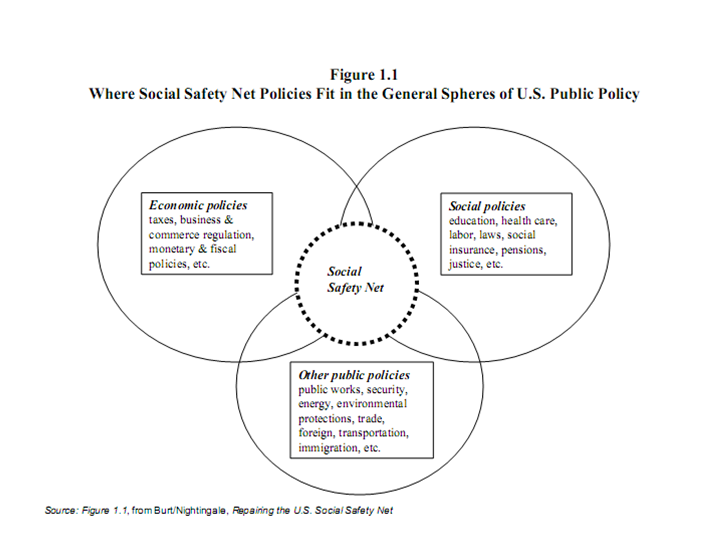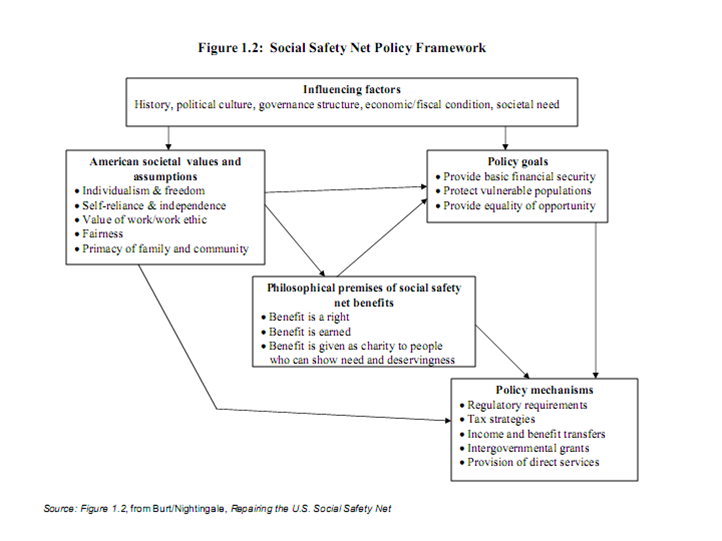Researchers at the Urban Institute have recently released a book about the forces and values that shape the social safety net in the United States. (Repairing the U.S. Social Safety Net.)
Yesterday, they held a briefing to discuss their book and solicit comments from other experts. Demetra Smith Nightingale, one of the authors, described how different parts of the social safety net interact, and how societal values and assumptions shape the creation and evolution of individual safety net programs. One of their fundamental conclusions is that society’s trust in government is reflected in how safety net programs are structured. When there is more trust in government the programs can be national in scope and administered by the Federal Government, such as with Medicare or Social Security. But when there is less trust in government, then programs are created which may be funded or supported with government dollars, but the programs are administered by state or local governments or even by private entities.
It is clear that today’s society is in a trust the government less mode, and this is reflected in the movement of the health reform legislation towards state and private entity implementation. Why this is important is that the Urban Institute researchers also looked at how well various types of social safety net programs work, and they noted that those with more local implementation also have much greater variability of effectiveness and penetration.
Two other conclusions from the discussion may be important for the implementation of a new health reform law. First, food stamps are really the most fundamental part of the social safety net in the US since they are the most easily obtained and food is the most basic of human needs. And second, the social safety “net” is probably more like a series of lines that may or may not productively insect. This situation might be like two fishing boats: One using a net can very efficiently and productively catch lots of fish, while another using a number of individual lines may be able to use a variety of baits, but will surely miss catching many fish.
Below are two of the charts from the book which were distributed at the briefing. These are very informative because they summarize how the different parts of the social safety net interact and the policy framework which connects societal values, goals, program structure and implementation.


